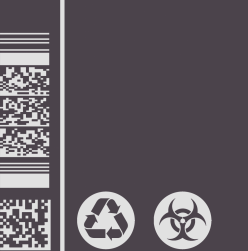Since the animation “Steamboat Willie” was created and became a big success, Disney gradually completed its aesthetic, industrially, technologically, and commercial rule of the animation industry. Until today, Disney seems to have become the creator of the animation specification, sought after and imitated by countless animators. But just like filming, the film should not be bound by rules.
Compared with films, animation is much less innovative. Disney animated film pushes the 12 rules of animation to the pinnacle. But the 12 rules are just 12 guidelines for animation production. Although the rule of 12 still applies to 3D animation, 12 rules came from 2D animation.
The early 2D animations were all hand-drawn frame by frame animations by animators, which made it impossible for animated characters to have details such as beautiful clothes or accessories because every additional detail meant a lot of work. Animators often have to repeat the same props tens of thousands of times. Talented Disney animation designers used Exaggeration, Secondary Action, Anticipation and other methods to enrich the characters lacking details and proved their effectiveness.
The emergence of CGI seems to have turned the animation industry into a turning point. However, it is a pity that early computers still could not carry too many complicated props, so animators used the same method to enrich characters that lacked details. But while Moore’s Law is driving the development of computers, the animation style dominated by Disney seems to have never seen a significant change. Although Disney’s animation has made great progress in the character’s skin, hair, and textures, after more than 20 years, Disney’s animation works still inherit the same character design style. Countless princesses from Disney animated movies seem to inherit similar facial features but skin colour. Compared with Disney’s effort on the plot, their changes to the scene and character design appear too conservative.
ALBERT MIELGO is one of the animators I like and admire. He directed and produced the promotional videos watchdog London, <witness> in Love, Death & Robots (2019), and served as art director and special effects director in <harry potter and the Deathly Hallows: Part 1> (2010) and <Spider-Man: Into the Spider-Verse> (2018).
Albert does not follow Disney’s aesthetically, industrially, technologically, and commercially. He rarely uses Anticipation in “witness” and “Spider-Man: Into the Spider-Verse”. The extent of Exaggeration is also far less than Disney. Each character has a rich, detailed appearance, even deliberately adding invalid details to balance the picture. Secondary Action is also very unobvious. People’s actions are closer to reality.
Advanced computers allow Albert to use exquisite props, gorgeous costumes, and magnificent scenes to enrich frames without sticking to the characters’ Exaggeration, Secondary Action, Anticipation, and other rules.
The epic picture can also earn the audience’s appreciation and applause.

One of Albert’s tricks is to insert exaggerated 2D hand-drawn frames between the original consecutive frames (these hand-drawn frames may even from the storyboard) to express the character’s personality or emphasize the character’s state.
The animations are close to reality but have their styles.
The scene uses a lot of 2d hand-drawn instead of 3d models.
The character uses simple materials to highlight the hand-painted texture of the actors and actresses. (No strong Hight and Normal textures)
Albert also likes to play some tricks on the edges of characters or set dressing. For example, use different lines to outline these edges to protruding the role or set dressing.
In addition to Albert, many other animators or studios are walking in a different way from Disney. In fact, Disney only dominates the big screen. Excellent commercial animation studios such as Axis Studio in the United Kingdom, Unlisted Studio in Australia, and Elastic Studio in the United States have not imitated by Disney and paid more attention to the picture.
